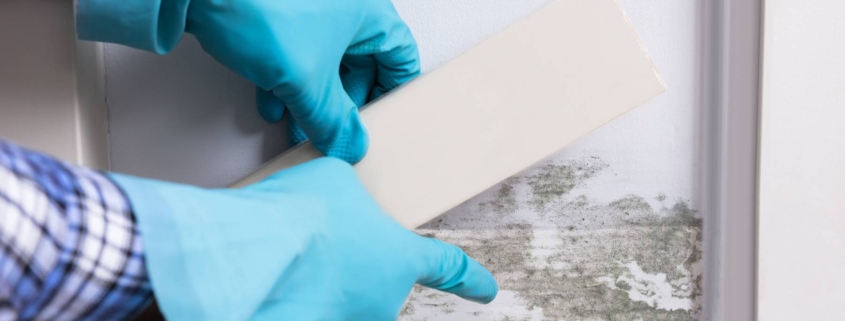Mold Testing in Northern VA: What Every Homeowner Should Know
Understanding the Importance of Mold Testing
Mold is one of those things no homeowner wants to deal with, but it’s more common than most people realize. Whether it’s visible on a bathroom ceiling or hidden behind walls, mold thrives in damp, dark environments and can pose both health risks and structural concerns. In Northern Virginia, where humidity levels can swing from season to season, mold growth isn’t unusual—and that’s exactly why mold testing is so important.
Mold testing is a process used to identify the presence, type, and concentration of mold spores in a home. If you’re experiencing unexplained health symptoms, noticing musty odors, or seeing signs of water damage, testing can provide the clarity you need. It’s a smart step for anyone buying, selling, or living in a home where mold is a concern.
What Triggers the Need for Mold Testing
Sometimes mold is obvious. You might see dark patches growing in the basement or smell that telltale musty odor in a bathroom that doesn’t ventilate well. But in many cases, mold is hiding out of sight—behind drywall, under flooring, or inside HVAC systems. These hidden colonies can continue to grow quietly while affecting the air you breathe every day.
Northern VA’s mix of older homes and humid summers makes the area especially susceptible to mold issues. If your home has had roof leaks, flooding, or plumbing problems, mold could be part of the aftermath. Mold testing helps detect issues before they become widespread, helping you take action early and avoid expensive repairs down the line.
How Mold Testing Works
Professional mold testing typically includes an on-site inspection, air sampling, and sometimes surface sampling, depending on the situation. During the inspection, a trained expert will look for signs of moisture intrusion, visible mold, or areas with high humidity. Air samples are collected and sent to a lab to determine what kinds of mold are present and how concentrated the spores are.
There are many types of mold, but some are more concerning than others. For example, Stachybotrys, often referred to as black mold, is known for producing allergens and irritants that can affect indoor air quality. Other common indoor molds include Aspergillus and Cladosporium, which can still cause problems, especially for people with allergies, asthma, or weakened immune systems.
Once the lab results are back, your inspector will walk you through the findings and help you understand whether remediation is needed. If mold is present in elevated levels, the next step is typically a mold remediation plan to remove the source and address the underlying moisture issues.
Why Professional Mold Testing is Worth It
While DIY mold test kits are available in stores, they’re often unreliable and don’t provide the full picture. Mold spores are always present in the environment to some degree, so finding mold isn’t unusual—but understanding how much is present, what type it is, and where it’s coming from is something best left to professionals.
A licensed mold inspector in Northern VA will not only test for mold accurately but will also help you pinpoint the source of moisture that’s fueling it. That insight is key to preventing future issues. Without solving the root cause, mold can come back quickly, even after a cleanup.
Having official mold testing results is also helpful during real estate transactions. Whether you’re buying or selling a home, testing provides peace of mind and ensures you’re making informed decisions.
Mold Testing and Health: What You Should Know
One of the main reasons homeowners invest in mold testing is to protect their family’s health. Mold exposure doesn’t affect everyone the same way, but it can lead to respiratory issues, nasal congestion, coughing, eye irritation, and skin problems. For people with asthma or compromised immune systems, the symptoms can be more severe.
Children and older adults are particularly sensitive to indoor air quality. If you’ve noticed recurring colds, allergy-like symptoms, or breathing problems in your household, mold could be a contributing factor. Testing offers a clear answer and a way to move forward if remediation is needed.
FAQs
- How do I know if I need mold testing?
If you’ve experienced recent water damage, smell musty odors, or have health symptoms that worsen indoors, it’s a good idea to get your home tested. - Can mold grow even if I don’t see it?
Yes. Mold often hides in walls, under flooring, or inside HVAC ducts. Testing can detect spores even when no visible mold is present. - Is mold testing safe?
Absolutely. The process is non-invasive and involves collecting air and surface samples to be analyzed by a lab. - What happens if mold is found?
If elevated levels of mold are detected, your inspector will recommend remediation steps and help you understand how to prevent it from returning. - How long does mold testing take?
The inspection usually takes one to two hours, and lab results are typically available within a few days.
Final Thoughts
Mold testing gives homeowners in Northern VA the information they need to keep their homes safe and healthy. Whether you’re dealing with a recent water issue, preparing to buy or sell, or simply want peace of mind, professional testing can help uncover hidden mold problems before they become costly or harmful.
With the right professional by your side, mold testing is a simple, straightforward process that can make a big difference. It’s one of those services that may not be top of mind—until you really need it. If you’re concerned about mold in your home, don’t wait. Testing today could help you breathe easier tomorrow.





Leave a Reply
Want to join the discussion?Feel free to contribute!